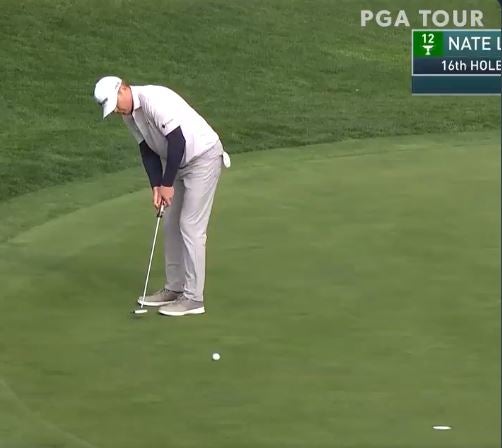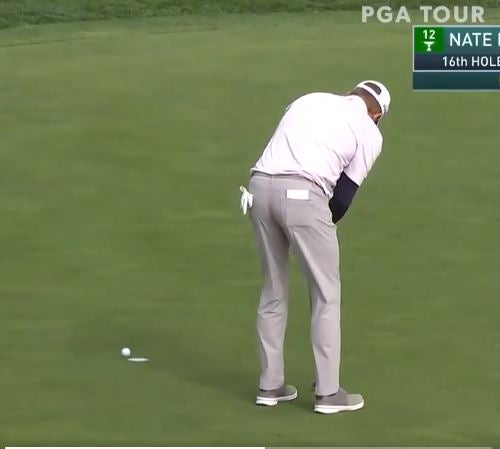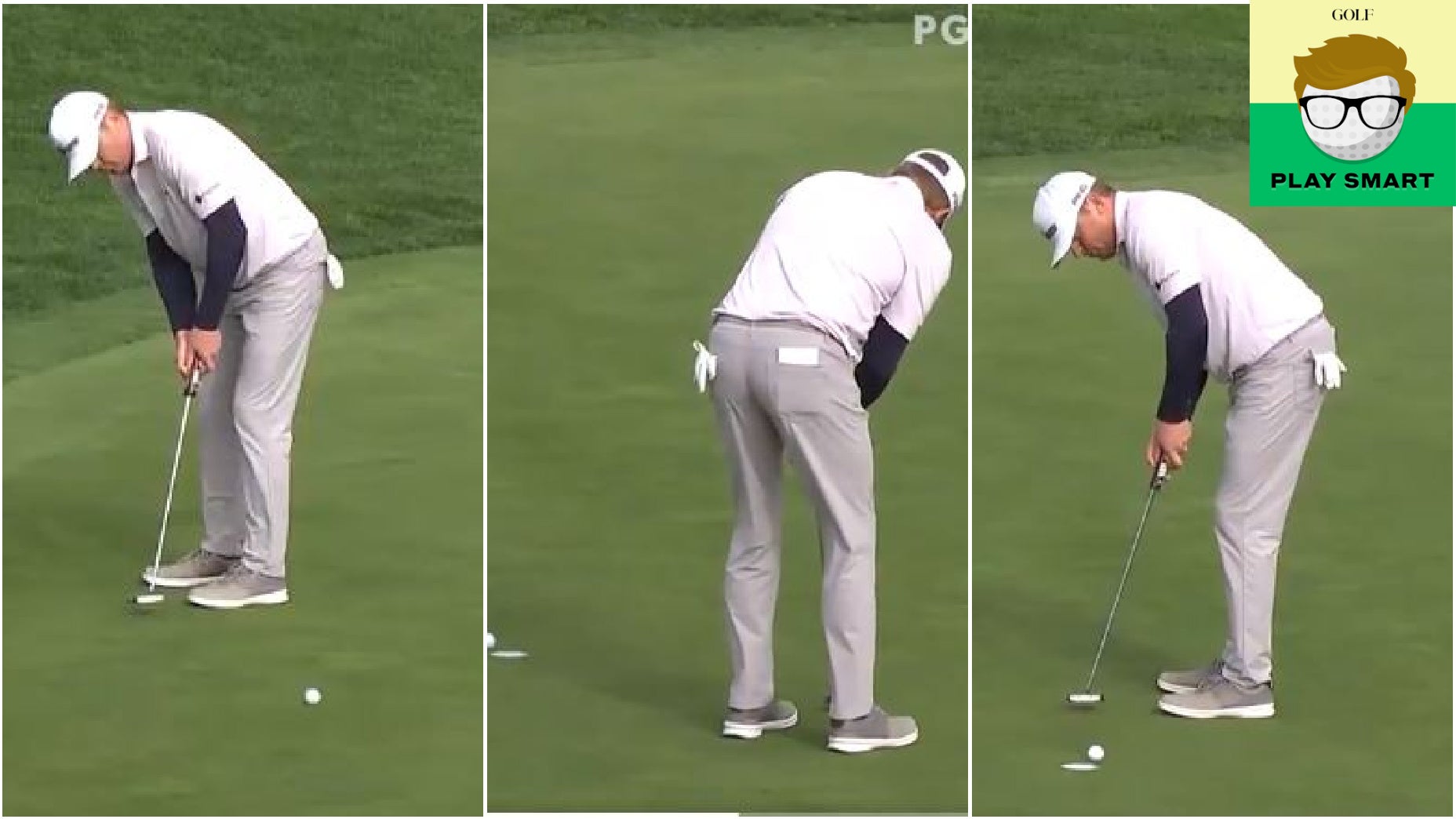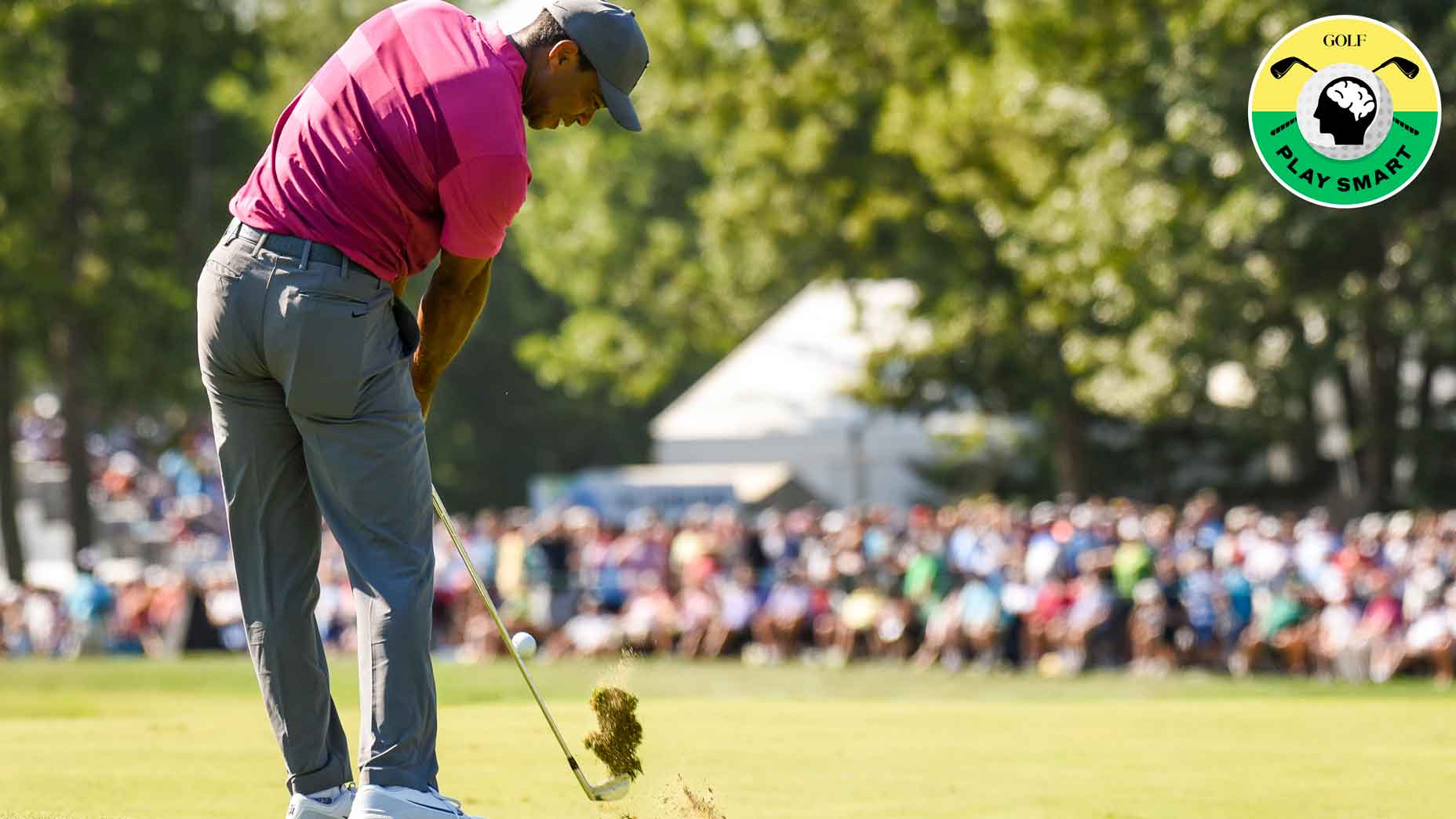Welcome to Play Smart, a game-improvement column that drops every Monday, Wednesday, and Friday from Director of Game Improvement content Luke Kerr-Dineen to help you play smarter, better golf.
We’ve all had those moments. The moments on the golf course where everything crumbles to pieces around you. In the unfortunate case of Nate Lashley, that moment came on the 16th hole at Pebble Beach at the AT&T. The four-putt from 13 feet dropped Lashley from a tie for the lead into an eventual T-5, costing him upwards of $500,000 along the way.
I’m not trying to pile-on here, but I do think it’s worth taking a closer look at how the four-putt unfolded.
But before we get going on this, I want to be clear on this: I have no idea what Lashley was thinking throughout this. Lashley is a PGA Tour player who doesn’t want or need my advice. My goal is to simply draw lessons that we, at home, can learn from watching the sequence of events. Why? So that way we can learn to avoid the similar mistakes in our own game, and understand how even the best golfers on the planet succumb to them.

1. Too aggressive trying to make the putt
Lashley left his chip 13 feet above the hole, meaning he had a downhill right-to-left putt. Whether it was nerves, a lapse of concentration or a simple misjudging of the speed, Lashley committed the cardinal sin of hitting a downhill putt too firm.
Why is that a cardinal sin? Because it brought the worst possible miss into play.
Before every shot, a good course management rule is to establish where you want to be playing your next shot from.
While it’s true Lashley could’ve left his putt short and faced a tricky downhill putt for his next one, any putt he didn’t hit hard enough would’ve, at the very least, kept rolling towards the hole.
Which means hitting this putt too soft would’ve been a preferable option for hitting it too firm. Get too aggressive trying to make the putt, and you’ll blow it by the hole then leave yourself a longer putt coming back.
That’s exactly what happened. Lashley was too focused on making his first putt he wasn’t thinking about the shot that may come after that.

2. Hard and straight OR soft and breaking
On short putts, you really have two options: Play it somewhere inside the hole and roll it firm, or use the break to work it slowly into the hole.
There have been great players who do both, and as Tiger’s success on short putts during his prime showed, there’s something quite appealing about the jam-it-in-the-middle mindset.
On this putt, Lashley looked to line up outside the left edge but then hit the putt too firm for the line, causing it to lip-out on the hard side. He probably just misread this one, but Lashley aside, there’s a valuable lesson here for your own game: When hitting short putts, the key to is to pick one strategy and stick to it.

3. It’s not over until it’s over
To be honest, I’m not fully sure what happened on this one. His stroke looked a little pull-y, combined with a right-to-left putt, and the result was a short putt that missed low.
But again, we’re not here to speculate on Lashley. We’re here to share advice you can learn from watching golf. The lesson on this one?
That no matter what has come before it, golf requires you to constantly treat each shot independently. It requires your full attention and commitment, otherwise, you’ll get burned.
Watch the full sequence below:
4 putts from 13 feet.
— PGA TOUR (@PGATOUR) February 14, 2021
Nate Lashley was tied for the lead before this triple bogey. pic.twitter.com/kGR3YQbUzG










